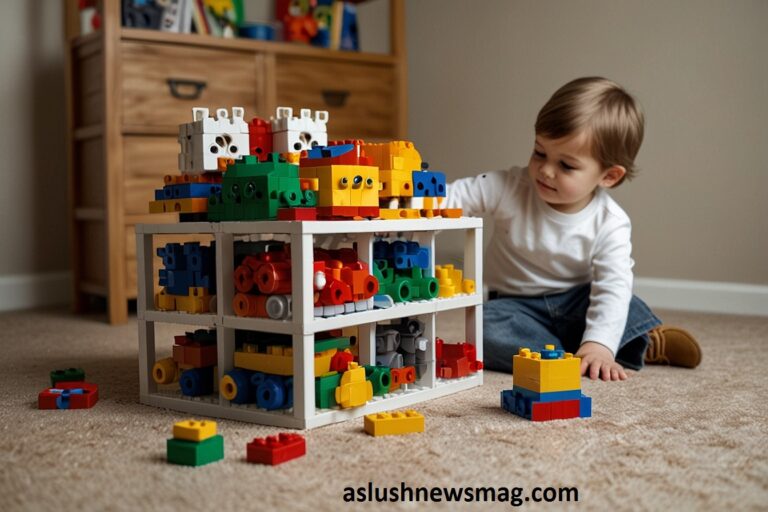Keeping a home neat and organized can be a challenge, especially when you have children. One of the most common sources of clutter in family homes is toys. From tiny LEGO bricks to oversized stuffed animals, toys can quickly take over any room. That’s where toy storage solutions come in. Implementing the right strategies can not only maximize space but also help your children learn responsibility and organization.
In this detailed guide, we explore practical, stylish, and functional toy storage ideas for every type of home and budget.
Why Toy Storage Matters
Toy storage is more than just a cleaning tactic—it’s about creating a functional, safe, and enjoyable environment for your children. Cluttered spaces can lead to:
- Tripping hazards
- Lost toys
- Overstimulation
- Difficulty focusing during play or learning
A well-organized space encourages children to:
- Play independently
- Clean up after themselves.
- Take better care of their belongings.
Best Toy Storage Ideas for Every Room
Toy Storage Bins and Baskets
Bins and baskets are the most versatile and budget-friendly options. Available in plastic, fabric, wicker, or wire, they come in a variety of sizes and colors to match your home’s decor.
Tips for usage:
- Label each bin for different toy categories (e.g., puzzles, dolls, cars)
- Use transparent bins so kids can see what’s inside.
- Stackable bins are perfect for small spaces.
Toy Storage Cubes and Organizers
Cubed shelving systems (like IKEA’s KALLAX) are extremely popular for toy organization. Each cube acts as a dedicated compartment that can hold bins, books, or display items.
Benefits:
- Customizable to fit any room
- Doubles as decor with the right styling
- Easy access for kids
Toy Chests and Trunks
The classic toy chest never goes out of style. A large, lidded box can store a wide variety of toys and even act as a bench or seating area.
Things to consider:
- Choose a chest with a soft-close lid for safety.
- Go for lightweight materials if it’s intended for kids to use independently.
- Personalize with paint, decals, or your child’s name.
Over-the-Door and Hanging Storage
Limited on floor space? Maximize vertical real estate with hanging storage solutions.
Options include:
- Over-the-door shoe organizers (great for small toys or art supplies)
- Hanging mesh baskets
- Wall-mounted storage pockets
Perfect for playrooms, bedrooms, or even closets.
Under-Bed Storage Solutions
The space under the bed is often overlooked. Use low-profile bins with wheels or drawers to keep toys hidden yet accessible.
Ideal for:
- Bedrooms with limited storage
- Seasonal toy rotation
- Keeping floor space clear
Multi-Functional Furniture
Storage ottomans, benches, and tables with built-in compartments offer double duty—functionality and style.
Examples include:
- Coffee tables with hidden storage
- Benches with lift-up seats
- Chairs with side pockets for books or plushies
Great for living rooms, where you want to keep the area stylish and toy-free.
Wall Shelves and Display Units
Shelving isn’t just for books. Use open wall shelves to:
- Display toy collections (action figures, dolls, etc.)
- Store games and puzzles
- Feature favorite books alongside toys.
Floating shelves can help keep fragile or special toys out of reach of younger kids.
Rolling Carts and Trolleys
A rolling cart offers mobility and flexibility. Kids can pull their favorite toys into different rooms and roll them back after playtime.
Use them to:
- Store art supplies
- Organize LEGO sets
- Manage craft materials or Play-Doh tools.
Toy Storage Solutions by Age Group
Toddlers (1–3 Years Old):
- Open baskets at floor level
- Soft bins with no sharp edges
- Toy shelves with picture labels for easy identification
Preschoolers (3–5 Years Old):
- Labeled bins by toy type
- Toy organizers with drawers
- Toy rotation system for variety and focus
School-Aged Kids (6+ Years):
- Modular shelving units
- Storage desks for homework and toys
- Clear bins with detailed labels for responsibility
Decluttering and Toy Rotation Tips
Even the best storage solutions can become ineffective without regular toy rotation and decluttering.
Here’s how:
- Every 3–6 months, donate or store away rarely-used toys
- Keep a “toy jail” box for toys not put away properly—kids can earn them back.
- Introduce new toys by putting older ones out of sight temporarily.
This keeps the toy collection fresh, manageable, and exciting.
Stylish Toy Storage for Modern Homes
Storage doesn’t have to be an eyesore. Many brands now offer aesthetic toy organizers that blend seamlessly into modern homes.
Look for:
- Neutral color palettes (white, beige, grey)
- Wood finishes or Scandinavian designs
- Minimalist designs with clean lines
You can even DIY custom storage using crates, ladders, or repurposed furniture.
Toy Storage for Small Spaces
Living in a small apartment? Try these space-saving ideas:
- Wall-mounted pegboards for hanging baskets
- Foldable storage bins
- Ottoman beds with hidden compartments
- Toy hammocks for stuffed animals
Think vertically, use corners, and embrace minimalism to avoid overwhelm.
Conclusion – Turn Chaos Into Calm with Smart Toy Storage
An organized home starts with intentional systems, and when it comes to kids’ toys, the right toy storage solution can make all the difference. Whether you’re working with a spacious playroom or a compact living area, there’s a creative and functional way to store toys that fits your style and space.
From bins and baskets to shelves and storage furniture, toy organization not only reduces mess but promotes a healthier, more enjoyable environment for the entire family.

